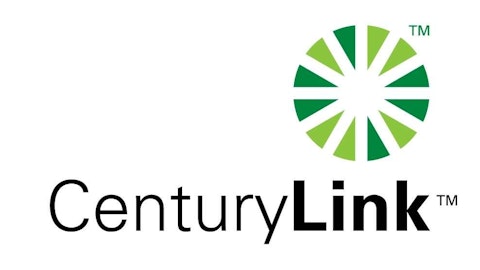Investors of CenturyLink, Inc. (NYSE:CTL) got a rude awakening on Feb. 14, when they found that their company had cut its dividend 25% amidst providing its fourth-quarter and full-year results. Dividend cuts are almost always painful, and the market surely seemed surprised by the company’s decision to slash its payout, since shares were down more than 20% on the day.
The question to investors is, with the news baked into the stock price, what should you do with CenturyLink now? Should you sell and take the loss? Or, on the other hand, is the dividend cut a sign of the bottom, with better days ahead for the company?

The dividend cut will surely leave a bad taste in investors’ mouths. Combine that with a big down day for the stock, and a lot of investors might be tempted to cut their losses and dump the stock. While that is certainly understandable, it’s worth noting that underneath the headlines, the company’s reported results weren’t all bad. For the year, CenturyLink reported revenues increased almost 20% from 2011.
Full-year earnings per share clocked in at $2.67, up 1.1% year over year. With the reduced dividend, the company now has more flexibility to reduce debt and shore up its capital position. Prior to the dividend cut, the company’s payout ratio was over 100% based on 2012’s earnings. The new annualized dividend of $2.16 represents a payout ratio of 80%. The ratio is still on the high side, but it’s certainly more comfortable.
While we’re on the subject of debt reduction, you may have noticed that’s exactly what CenturyLink said it intends to do going forward. In addition to buying back its stock, the company wants to achieve an interest coverage ratio of 3 times. More simply stated, CenturyLink wants to have a thicker cushion between its earnings and what it has to pay on its debt. Furthermore, the company made some progress on that front during 2012, reducing long-term debt by almost $2 billion.
Going forward, the situation seems cloudy. It’s worth noting that the company is still heavily reliant on land-line phone services, an industry clearly in decline. The company’s acquisitions of Qwest Communications and Savvis in 2011 is helping it branch out from the declining land-line business into data and cloud services, but the company still has a ways to go in that regard.
Two alternatives for shell-shocked investors
For investors who simply don’t want to deal with the headaches of a company trying to turn itself around, there are a couple alternatives available in the telecommunications sector. AT&T Inc. (NYSE:T) is the telecom giant of the United States. The stock has a market capitalization of almost $190 billion. The company reported earnings per share excluding items increased 8.6% in 2012 versus the prior year. The stock yields slightly more than 5%. AT&T has raised its dividend at a rate of about 2.3% annually over the last five years. The stock has traded between $29 per share and $38 per share since the beginning of 2011, which may be attractive for investors who shy away from volatility.
A second alternative would be Verizon Communications Inc. (NYSE:VZ), the other major American telecommunications company. Like AT&T, Verizon also provides internet, telecommunications and television services. Verizon’s dividend yield is slightly lower than AT&T’s, at about 4.8%, but it has grown at more than 3.6% annually over the last five years. Verizon navigated 2012 well, with full-year operating revenues climbing 4.5%.
The bottom line
CenturyLink is a profitable company that is working to branch out its operations into newer technologies. It’s certainly in a better situation that its rural land-line peers, but it’s nonetheless in a challenging period. The company is committed to paying down debt and being able to actually afford its dividend out of its earnings, both of which are good things.
Investors who may not want the headache of having to pay close attention to CenturyLink’s progress going forward should consider AT&T and Verizon. On the plus side for CenturyLink, due to the stock’s dramatic decline, the yield is almost where it was before the dividend cut. New investors will still be getting a 7% yield, better than the yield on both AT&T and Verizon. However, both AT&T and Verizon offer solid cash flows and better businesses.
For me, CenturyLink having a better dividend yield by a couple percentage points doesn’t offset its declining land-line business. Each investor will have to make this decision for themselves, but for me, I’d prefer either AT&T or Verizon to CenturyLink.
The article In the Wake of a Dividend Cut, What’s an Investor to do with CenturyLink? originally appeared on Fool.com and is written by Robert Ciura.
Copyright © 1995 – 2013 The Motley Fool, LLC. All rights reserved. The Motley Fool has a disclosure policy.





